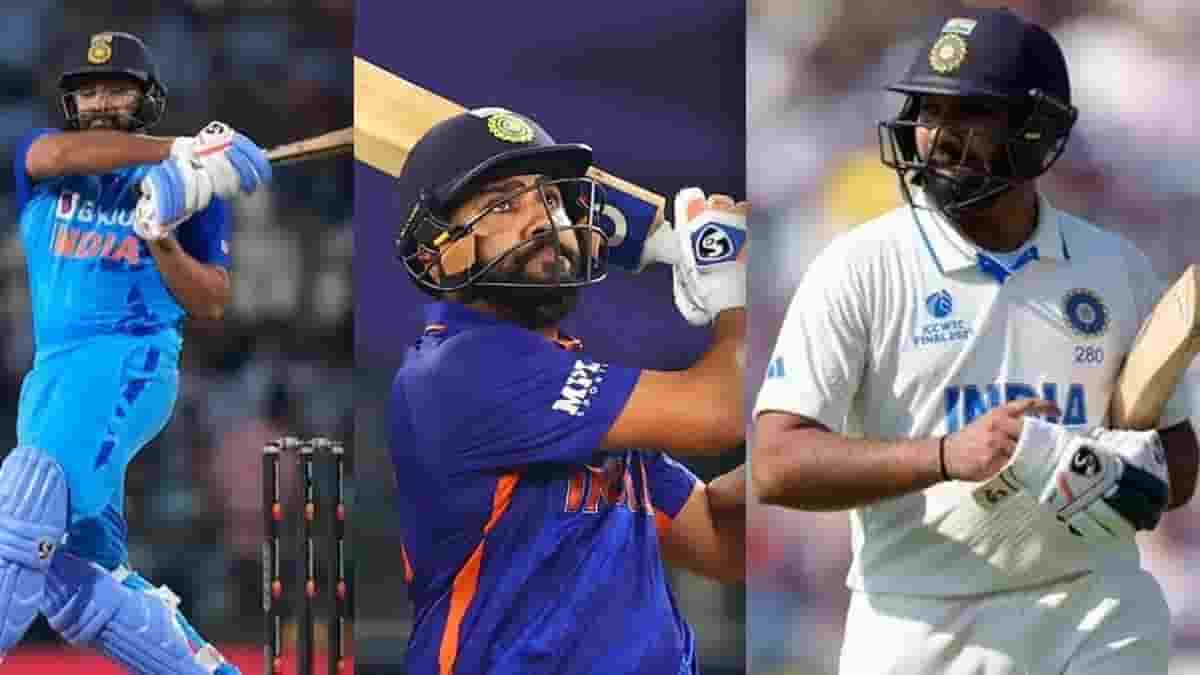
For any cricketing side, having an all-format player is frequently a luxury. In many international cricket teams, a player who could play Tests, switch to T20Is and then find the appropriate balance to play ODIs is a rarity. In India, there are already an excessive number of cricket players, and many of them play all three formats. This article will examine if India should avoid 3 format players in favour of developing one or two format experts.
Playing 3 formats is a boon or a bane?
The work of the selectors is made quite simple if the national team has a fantastic 3 format player because they always get one player in the starting XI in any format. Virat Kohli, Rohit Sharma, Mohammed Shami, Jasprit Bumrah, Ravindra Jadeja, and many other Indian players have honed their three-format skills over the years.
There is no question about the skills of these players because they have demonstrated that, in every game style, they are capable of winning a match on their best day. There is a claim that participating in all three forms limits these players’ capacity to quickly move between them. For instance, the Indian cricket team played Australia in the World Test Championship Final immediately following the 2023 IPL.
Even Shubman Gill, Jadeja, Ajinkya Rahane, Shami, and KS Bharat participated in the IPL 2023 finals, which were finished in the wee hours of May 30 just days before the WTC Final. Just eight days later, Gill, who had been playing with a strike rate of 150 plus against a white ball in the IPL, was taking on the likes of Pat Cummins, Mitchell Starc, and Scott Boland with a red Dukes ball.
Switching from one format to another
Some of the greatest performers have difficulty switching from one format to another because it is not simple. Even the selectors frequently choose a player for the squad based on performance in a different format. For instance, Surya Kumar Yadav, who is regarded as one of the best T20 batters of the current time, if not the best, was chosen for a test match against Australia.
In the lone innings, he played in the Border Gavaskar Trophy 2023 match in India, Surya only managed to score 8 runs off 20 balls. Nathan Lyon went through his bat and pads as he was being dismissed while he was playing a drive. Considering that the Indian squad was having trouble replacing Rishabh Pant, who is known for his aggressive Test batting, some would argue that it was a wise option at the moment. After that test match, Surya played three ODIs against Australia. He was dismissed for three consecutive golden ducks.

In the WTC Final, Kohli and Rohit also made plays that they may have avoided if they hadn’t played T20 cricket for the previous two months. Mohammed Siraj, Shardul Thakur, Umesh Yadav, and Shami were unable to hold their line and lengths on the opening day, which further demonstrated their lack of bowling practice. There are significant differences between bowling four overs in an IPL match and more than 15 overs in a test match.
What is the solution?
The creation of specialists for a format is one simple approach. One-format experts like James Anderson and Stuart Broad are excellent examples. For England, Anderson and Broad exclusively participate in test matches. This is really beneficial for England since they have two reasonably fit bowlers available to them when playing test cricket. Additionally, this protects players who must play in other formats from injuries. While this does not imply that Anderson and Broad play every test match, the fact that they exclusively play test cricket makes it possible for other bowlers like Mark Wood to participate in alternative tests.
The best Indian example of this is Cheteshwar Pujara, who has recently struggled in test cricket. The Board of Control for Cricket in India (BCCI) also needs to figure out how to compensate these players for sticking with a particular format. To demand someone like Kohli or Rohit give up their IPL deal, which pays more than 15 crores every season, would be unreasonable.
What can India do to solve this?
One thing has become increasingly clear over the course of the IPL’s 16 seasons: India will always have access to young, promising athletes. Young talents like Rinku Singh, Yashasvi Jaiswal, Ruturaj Gaikwad, and others demonstrated their ability to compete against top-tier players even in the IPL this year. India has to take a close look at these players and replace a few of the more experienced ones from at least one format. The senior players will benefit from this by performing better in the two formats they compete in.
Both Rinku and Yashasvi appear capable of beginning to play T20 international cricket for India. For instance, KL Rahul will be able to play in ODIs and Tests, where he has fared significantly better than in T20Is, thanks to the inclusion of these two. It would be perfect if BCCI could ask Jasprit Bumrah, India’s premier fast bowler to give up at least one format because he has missed a lot of cricket due to injuries. With all the money they make, BCCI needs to develop a revenue strategy that rewards players for giving up lucrative T20 cricket or IPL.
Also Read: What is Bazball? Will it work in the Ashes?
“Get more breaking news, cricket updates, fixtures, and trending news only on cricfiles.com. Follow us on Facebook or Twitter and Subscribe to our YouTube Channel today.”





